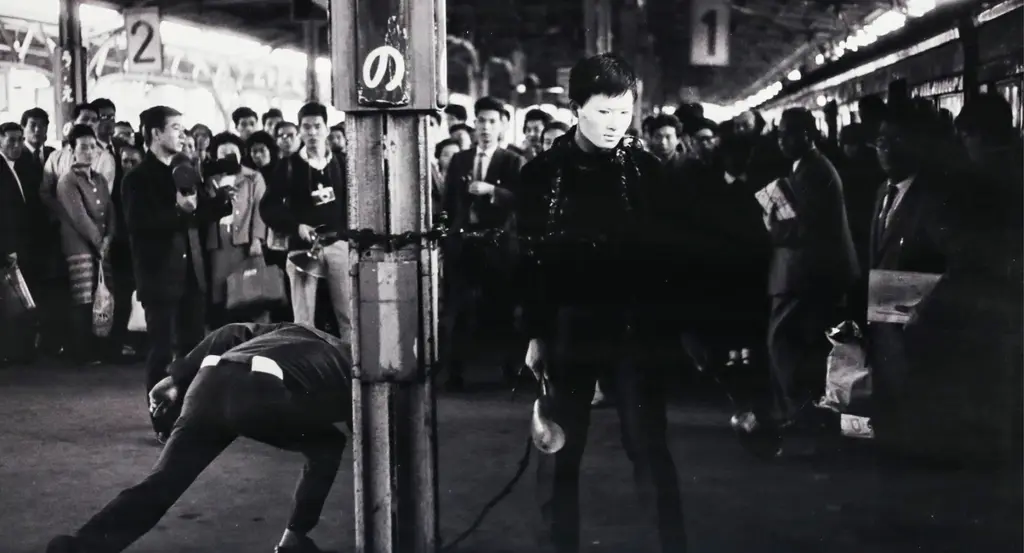Sage Vaughn
- Text by Harry Wade
- Photography by Mike Piscitelli

LA resident Sage Vaughn has grown from being a graffiti kid and “just wanting to vandalise shit” to a contemporary artist courted by galleries across the globe. Born in Oregon to “full-on hairy, hippie” parents, Sage moved to LA when he was four, but still struggles with the idea of being an Angelino. “Some part of me never feels one hundred per cent that I am from LA, I have this call of the wild thing,” he says.
Much of his work sees birds and nature at the centre of an urban backdrop, a juxtaposition that seems to speak of Sage on different levels. “I have always been a guy that has one foot in one world and one foot in the other, I always felt like I never fit in anywhere,” he says. Living a sheltered childhood, blissfully unaware of ‘hipster cool’, Sage’s eyes were opened to street art at a pretty young age. “I went to a show in San Francisco, by graffiti artist Twist [aka Barry McGee]. It was the first time I’d ever seen graffiti in a museum, art that was similar to what I did, and people were looking at it with respect.”
Having grown-up seeing graffiti an excuse to “vandalise shit,” Sage has watched street art’s meteorical rise with raised eyebrows. “It’s seeing graffiti become a trendy thing in the art world, where you have rich grad school kids in museums writing this very perfect analysis of graffiti. It is such a weird taming of this thing,” he explains. “The only thing I like about graffiti is that it is wild, so to see it get tamed is like seeing a tiger in the jungle; it’s a once in a lifetime experience, but seeing a tiger in the zoo just feels so different.”
Sage recently moved from the trendy Silver Lake neighbourhood to Pasadena. “There were too many blonde skinny hipster girls and it was too segregated,” he explains. “Now in Pasadena there is a mix of people. It’s rad!” After a morning surf in Malibu, he spends six-to-eight hours in the studio, so he gets through a lot of music. So much music, in fact, he’s even developed a few theories. “I’ve been thinking forever that hip hop needs its Nirvana,” he says. “Everyone raps about the same fucking crap, and I think Earl Sweatshirt might be the person to change it. Plus he is friends with Jason Dill, so he has good taste in people.”
The Best of LA
Rad Angelinos, big-upped by Sage Vaughn.
BAND: Mikki and the Mauses
Whispery sing-a-longs that wouldn’t seem out of place on that movie Juno. “We essentially play music only for fourteen-year-old kids, because they need a friend being like, It’s okay that you’re a freak, freak.”
ARTIST: Jason Dill
In both the figurative and literal sense. Give Dill a skateboard, give Dill a camera; either way he’ll show you something that will make your retinas burn.
Check out rad new exhibition Nobody’s Home at Lazarides Gallery, Rathbone Place, or find out more about Sage at his website.
You might like

Led By Donkeys: “It’s weird when right-wing commentators get outraged by left politics at Glastonbury – what did they expect?”
Send them to Mars — With their installation in Block9 launching the billionaire class into space, we caught up with the art and activism crew to chat about the long intersection of music and politics at the festival, how wrong the tech bros are, and more.
Written by: Isaac Muk

How pop music introduced queer culture to the mainstream
The Secret Public — Between the ’50s to the ’70s, pop music was populated with scene pushers from the margins. A new book by Jon Savage explores the powerful influence of LGBTQ+ folk.
Written by: Miss Rosen

The Getty Center’s first exclusively queer exhibition opens today
$3 Bill: Evidence of Queer Lives — Running until September, it features paintings, ephemera, video and photography to highlight LGBTQ+ histories, culture and people from 1900 to the present day.
Written by: Isaac Muk

A new documentary explores Japan’s radical post-war photography and arts scene
Avant-Garde Pioneers — Focusing on the likes of Daidō Moriyama, Nobuyoshi Araki, Eikoh Hosoe and many more, the film highlights the swell of creativity in the ’60s, at a time of huge economic change coupled with cultural tensions.
Written by: Isaac Muk

From his skating past to sculpting present, Arran Gregory revels in the organic
Sensing Earth Space — Having risen to prominence as an affiliate of Wayward Gallery and Slam City Skates, the shredder turned artist creates unique, temporal pieces out of earthly materials. Dorrell Merritt caught up with him to find out more about his creative process.
Written by: Dorrell Merritt

Inside the world’s only inhabited art gallery
The MAAM Metropoliz — Since gaining official acceptance, a former salami factory turned art squat has become a fully-fledged museum. Its existence has provided secure housing to a community who would have struggled to find it otherwise.
Written by: Gaia Neiman

